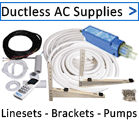Which heater works best for each type of room in the house?
People generally prefer less heat in the bedroom because the blanket's and bedding provide an adequate level of warmth. A panel heater or oil-filled heater with a thermostat and timer would probably be the best design in this case. Since heat is only needed in a particular area, it is also practical to consider a radiant design for the bedroom because of their particular effectiveness with directional spot heating.however, if you are disturbed by light when you sleep, stay away from a reflective design.
A living room needs a unit that is most capable of increasing ambient temperature and provides consistent background heat. so, a panel or convection heater will be your best choice here. A fan or radiant design is almost always the proffered choice in a service or workshop space. An oil-filled heater also works best in areas with little to no air movement is, so consider oil-filled models in basements or areas with minimal activity. This question is better answered by the ceiling height square footage of the room and the insulation-window factors that are present in the application area. |
| |
Can a portable heater be used as my main heat source?
Under most conditions, Portable heaters would not be sufficient to maintain a comfortable indoor temperature when being used as the primary heat source. Especially in Northern Climates and during the Winter months. However, the answer to this question is completely dependent on environmental conditions, personal preference and housing construction. In short, portable heaters will be better than nothing but are most ideal to be used for supplemental or targeted spot heating. |
| |
How are most heaters on the market rated ?
Unlike Portable AC’s, the heat output of space-electric Heaters are generally measured in Wattage. if you are more familiar and comfortable with calculateing output with BTU’s, the Watt value can easily be converted. If you multiply a heater's wattage by 3.41 you will attain the amount of BTU's you can expect from the heater. The average peak output of a heater for 1500 watts is 5120 BTUs per hour. BTU’s (British Thermal Unit) is the amount of heat needed to raise the temperature of 1 lb. of water 1 degree Fahrenheit. It is important to remember that unlike air conditioners, Space heaters are not measured by room size so the BTU key will not apply. |
| |
How safe are portable heaters to operate?...are they safe around kids?
As with many electrical appliances, caution should be taken when operating around children. Many of our Space heaters pose little to no threat to safety while our Propane units probably pose the greatest degree of hazard. Many of our mercathermic and ceramic designs employ various safety measures to ensure maximum household safety. Some of these include Thermal cut-off switch protection, Overheat protection and Safety Tip Protection. Even with these safety measures in place, it is important to remember that Heaters are used to produce heat and making some models hot to the touch and if operated improperly, pose a risk of fire. So we strongly recommend to keep ALL heating units out from the reach of any unattended children. On a more general note, certain safety procedures still need to be followed when using heaters to reduce the risk of fire, electric shock, and personal injury. Specifics will be detailed in the Owner's Manual. |
| |
What are some of the factors that effect a heater’s performance?
1. The amount, type and condition of insulation within the buildings structure.
2. Ceiling height negatively impacts space heating affectiveness. (See Below)
3. The overall tightness of the area in respect to draft (construction).
4. The number, material and thickness of doors and windows in the application space (household efficiency rating)
5. The outside-ambient temperature in relationship to the desired inside temperature.
|
| |
Why does my heater smell like something is burning?
It is possible that your heater will give off a slight burning odor. This is most common in brand new units and should go away after the heater has been used for a while. Some radiant designs will burn dust particles in the air which will be noticeable to the smell. A heater can also produce a burning odor from the result of dust-build up on the heat element. This odor is not considered offensive, barely noticeable and almost always temporary. |
| |
Can I place my heater against the wall?
Most heaters should not be placed directly against walls because such a positioning . Most heaters are designed with the air intake in the front so positioning would not be a concern in this case. Check the owner’s manual for details regarding the correct placement of the specific model in question. |
| |
Should I consider an electric heater?
Electric heat is the most common type of heating method and includes the largest selection of heating appliances in the industry today. Depending on the specific variety, space heaters use electricity to heat whichever element design the heating appliance employs. Some units use ceramic elements that heat a block of ceramic material to transfer heat. Another type is reflective heat which uses reflective radiation--similar to the sun--that will heat the surrounding objects and people, opposed to wasting energy by heating the air in the room. Aside from these two methods, electric heaters also can operate using heating oil. |
|
|
| View the Heater Design Overview Page > |
| View all Heaters > |
|
|






